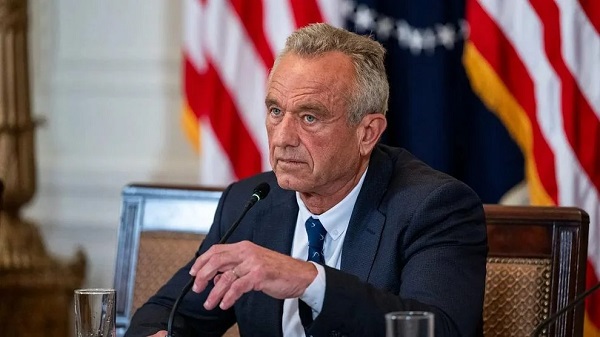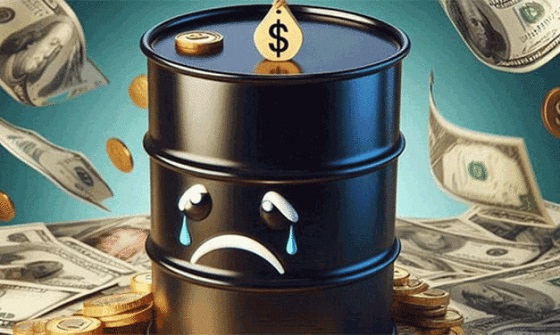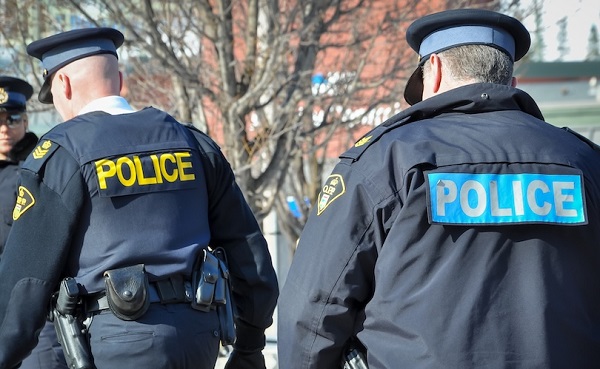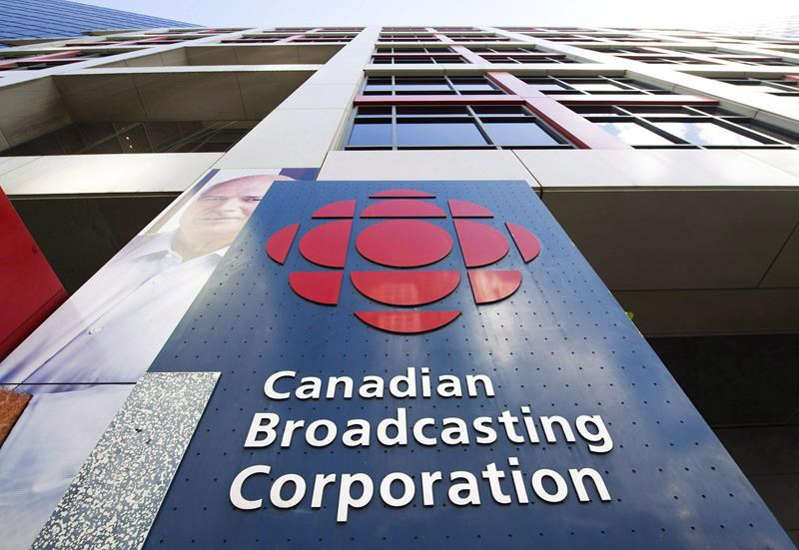Bruce Dowbiggin
The Formidable Superstar, Jim Brown Never Fit Black Or White Stereotypes
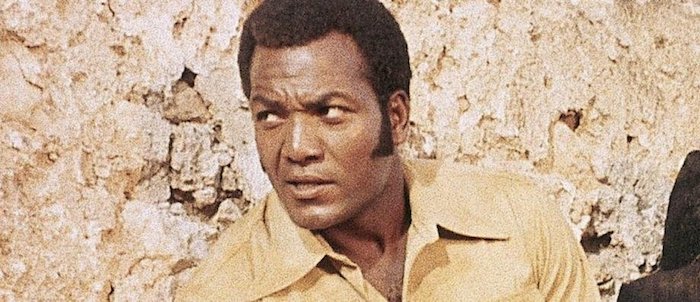
“M***er fuckers be hanging off him. Eight of ‘em be begging Jim, ‘Please, Jim, would you fall down, please? We’re on TV, my kids are watching’.” Richard Pryor on NFL players trying to tackle Jim Brown in the 1960s.
The death at 87 of legendary athlete/ film star/ political activist Jim Brown comes just over three months from the death of hockey icon Bobby Hull. Both were alpha males possessed of adonis figures, the essence of vitality in their time. Brown gave up the NFL to become a film star. He went on to champion causes in the black political movement.
Hull went on to sire a HHoF player Brett Hull and work in the cattle industry. He also traded on his stardom. He is still regarded as one of the five most famous Chicago sports figures of all time, up there with Michael Jordan, Dick Butkus, Gayle Sayers and Ernie Banks.

Neither man was without controversy, however. Brown’s name was frequently associated with domestic violence. According to press reports, “On June 9, 1968, Brown, then 32, was booked on suspicion of assault with intent to commit murder against his girlfriend. The arrest occurred when Brown lived in Los Angeles while working as an actor. The woman, a model, was found semiconscious and moaning on a concrete patio 20 feet below the balcony of Brown’s Hollywood apartment.”
There were other incidents with police involvement, many in fact, but you get the drift. Hull, too, had a nasty legacy of domestic assault stemming from incidents involving his first wife. Neither man spent time in jail for the episodes. Hull made some politically insensitive remarks as well.
But, funny thing. When Hull died the Canadian sports press reports dutifully dredged up all his personal business to rebalance the adulation he received in life. As we reported at the time, some people thought that part of his life defined Hull.
But you had to look very hard into the reports of U.S. sports media on Brown’s death this week to find much about his less-attractive side. The praise for his athletic prowess was effusive. Rightly so. But for the liberal sports press that came of age in the 1960s, it was too much to taint Brown’s political legacy by showing his less-flattering past. So they almost universally gave it a pass. In one interview, Bob Costas, the liberal’s liberal in the press box, skirted the issue to dwell on his boyhood memories of Brown.
Wonder why? Those news sources that dared mention it— the New York Times— were lambasted for sullying his reputation with the facts. “It’s the New York Times vs. ESPN for scumbag of the week” is a sampling of the pushback from the sports world.

While playing at Syracuse, Brown was perhaps the greatest lacrosse player in American history before going on to football fame with the Cleveland Browns of the NFL. We can still remember, as Richard Pryor did, the sight of No. 32 dragging defenders along behind him as he set rushing and TD records in a 12-game season— records that are still mostly unassailable. He’s a Top Five NFL player all-time. Colts HOF tight end John Mackey summed up Brown’s style. “He told me, ‘Make sure when anyone tackles you he remembers how much it hurts’.” They did. Vividly.
We can also recall the shocking news that Brown was ditching football in 1966 after nine NFL seasons to star in a Hollywood epic, The Dirty Dozen, with Lee Marvin, John Cassavetes and Donald Sutherland. (He intended to return to the Browns but when they wouldn’t let him miss training camp he retired.) How would he do? We rushed to see the film. Brown was just fine, dragging his fellow cast members after him like NFL players as he took on the Nazis.

He went on to star in 100 Rifles as Hollywood’s first black action star. Other movies followed. When the glamour of films lost its lustre Brown became an icon for the black political movement. He supported Muhammad Ali in his fight to avoid prison for refusing to serve in Viet Nam. He created camps and schools for black children and was a recurring figure at the seminal moments for black empowerment.
But his philosophy was not today’s Marxist #BLM brand. “We’ve got to get off the emotional stuff and do something that will bring about real change,” he said. “We’ve got to have industries and commercial enterprises and build our own sustaining economic base. Then we can face white folks man-to-man and we can deal.” He was not easily intimidated.

In 2018, Brown and Kanye West met with President Donald Trump to discuss the state of America. Criticized by the black community for the meeting, Brown said, ”we can’t ignore that seat and just call names of the person that’s sitting in it”. Brown called Trump “accessible”, and said that the president was not a racist. The Brown obits in liberal media buried those quotes deep in stories.
Still he scared some folks. Files declassified in 2003 showed that the FBI, the U.S. Secret Service and several police departments had monitored Brown and the Black Economic Union, attempting to smear the group as a source of Communist and radical Muslim extremism. Hillary Clinton would have been proud.
Brown himself was into unapologetic self-improvement as he showed when he went to Pryor’s hospital room after the comedian set himself alight while freebasing. While others soft pedalled their advice Brown made it clear that Pryor had to kick drugs, and that he would help him do so. (As thanks, Pryor later screwed Brown in a film deal that would have brought him millions.)
Brown was unrepentant when confronted about his past. “I’m no angel,” he told The (Cleveland) Plain Dealer in 1970. Regarding the assault allegations, he said, “I’ve never been convicted. I’ve just been harassed. I’ve been hit so much I don’t sting any more… I take it and look my accuser in the eye. I don’t look at my shoes when I talk to anybody. I know what I am. I only have to live with myself.”

That he did. The biggest difference between him and Hull was that the critics of the Golden Jet wanted to get tawdry clicks from his life story. With Brown they wanted him to advertise their Woke selves. That’s a huge and crucial difference in this insane world.
Sign up today for Not The Public Broadcaster newsletters. Hot takes/ cool slants on sports and current affairs. Have the latest columns delivered to your mail box. Tell your friends to join, too. Always provocative, always independent. https://share.hsforms.com/16edbhhC3TTKg6jAaRyP7rActsj5
Bruce Dowbiggin @dowbboy is the editor of Not The Public Broadcaster A two-time winner of the Gemini Award as Canada’s top television sports broadcaster, he’s a regular contributor to Sirius XM Canada Talks Ch. 167. Inexact Science: The Six Most Compelling Draft Years In NHL History, his new book with his son Evan, was voted the seventh-best professional hockey book of all time by bookauthority.org . His 2004 book Money Players was voted sixth best on the same list, and is available via http://brucedowbigginbooks.ca/book-personalaccount.aspx
Bruce Dowbiggin
Hunting Poilievre Covers For Upcoming Demographic Collapse After Boomers

For those not familiar with hunting seasons in Canada it may come as a surprise that the nation has a year-round hunting season. That would be the targeting of Conservative leader Pierre Poilievre by the massed army of Liberals, their bots and the richly endowed media pack. Forget he’s never held power. He’s to blame for the ills in Canadian society.
It has been a good hunt. After floor-crossing by dissident CPC, the Liberals are one seat from the majority that Canadian voters denied them in the spring. (They’ll likely get the majority soon.) MPs who a day earlier were at Conservative Xmas parties suddenly sang the praises of Carney. MPs in ridings targeted by the Chinese suddenly joined Team Elbow Up.
All the while the media corps landed blows from their perch. Robert Benzie: “I know that Premier [Danielle] Smith is very unhappy privately with Pierre Poilievre because she thinks that [MOU motion] is undermining this [pipeline] project.” The nadir of the media dog pile was formerly eminent scribe Robert Fife who sniped, “Conservatives persist with cute legislative tricks, while the government tries to run a country.” Run a country. That’s rich.
From his lips to Liberal brains, however. “.@CBCNews and @AlJazeeraWorld viewers consider themselves uniquely informed, says @ElectionsCan_E report. The two TV networks were named by self-described “informed” voters when asked where they got their news. “
It is, seemingly, a great time to be a Liberal. Or not. While Operation Poilievre was gathering steam for Xmas polling revealed that Liberals and Conservatives remain locked in a tie, and Canadians continue to express ambivalence about the country’s direction, mixed feelings about their leaders, and sharp divides by generation, region, and policy concern. These generational discrepancies continue to be buried.

As was the case in the spring, the Liberals are supported only by the Boomer generation that swallowed Elbows Up nostalgia like a fat man on a donut. The under 60s demo at every level shows the current Carney agenda is a loser for them. In the segment of house-rich Boomers the Libs lead 50-31 over CPC. But in every other category it’s “how can I get out of here faster?”
The 45-59 demo it’s 46-36 Conservatives; 30-44 it’s a whopping 48-31 CPC; 18-29 it’s 40-39 CPC. A healthy chunk of Liberal supporting from the collapse of NDP vote. Where they used to poll in the 20s, the highest demo shows 11 percent support. Otherwise Poilievere would be PM.
Meanwhile, research now finds that 54 percent of Canadians say the growing number of newcomers to the country threatens our traditional customs and values— an increase of sixteen points since 2020. Over the same period, the share of Canadians who say immigration strengthens our society fell thirteen points to 35%
In short, the Carney Circus of marrying Canada to China and the EU is a card trick that will be exposed shortly. But where do we see the Ottawa press corps attention to this impending demographic snow plow? As we wrote in March “It’s not hard to see the (under 60s) looking at the Mike Myers obsession with a long-gone Canada and saying let’s get out of here.
Recently former TVOntario host Steve Pakin attended two convocations. The first at the former Ryerson University, (switched to Toronto Metropolitan University in a fit of settler colonizer guilt.) The second at Queens University, traditionally one of the elite schools in the nation. Here’s what he saw.
“At the end of the (TMU) convocation, when Charles Falzon, on his final day as dean of TMU’s Creative School, asked students to stand and sing the national anthem, many refused. They remained seated. Then, when the singing began, it was abundantly noticeable that almost none of the students sang along. And it wasn’t because they didn’t know the words, which were projected on a big screen. The unhappy looks on their faces clearly indicated a different, more political, explanation.
“I asked some of the TMU staff about it after the ceremony was over, and they confirmed what I saw happens all the time at convocations. Then I texted the president of another Ontario university who agreed: this is a common phenomenon among this generation at post-secondary institutions.”
At Queens, where Canadian flags were almost non-existent, O Canada was sung, but the message of unrest was clear: “Convocation sends a message of social stability,” Queen’s principal Patrick Deane began in his speech. “It is a ceremony shaped in history. You should value your connection to the past, but question that inheritance. Focus on the kind of society you’d like to inhabit.”
You can bet Deane is not telling them to question climate change and trans rights. As Paikin observes, “if we fail to create a more perfect union, we shouldn’t be surprised when a vast swath of young people don’t sing our anthem the way so many of the rest of us do.” So why are the best and brightest so reluctant to see as future in becoming the new professional class that runs society?
In the Free Press River Page searched the source of their discontent. “If the Great Recession, Covid-19, and the spectre of an artificial intelligence-assisted ‘white collar bloodbath’ has taught the professional class anything, it is that their credentials cannot save them. This insecurity, compounded by the outrageous cost of living in many large cities, has pushed the PMC’s anxieties to the breaking point.

“Add that to the triumph of identity politics in professional class institutions like universities, corporate C-suites, non-governmental organizations, and media—itself a byproduct of inter-elite competition as many have observed—and what you have is the modern left.
“… they’ve already come to the baffling conclusion that there’s no difference between class struggle and child sex changes. More to the point, the socialist mantra “From each according to his ability, to each according to his need” has only ever stood the test of time in Anabaptist sects. It requires a religious devotion to self-sacrifice that is not characteristic of this anxious and hyper-competitive class—as many actual socialists have spent the last decade warning.”
The tsunami over immigration has caused severe dislocations— as PM Steven Harper predicted in the 2015 election debate. He was shouted down by the dopey dauphin Justin Trudeau who opened the sluice gates to every kind of progressive nonsense. Which is now evident.
Like all people addicted, CDN Boomers don’t want the truth. They want performance theatre, T-shirts and hockey games. They blame Trump for their predicament, caught between grim realities. Will they take the 12 steps? Or will their kids have to tell them the facts as they escort them to the home?” We’re now seeing the likely answer to that question everywhere in Canadian society.
Bruce Dowbiggin @dowbboy is the editor of Not The Public Broadcaster A two-time winner of the Gemini Award as Canada’s top television sports broadcaster, his 2025 book Deal With It: The Trades That Stunned The NHL And Changed hockey is now available on Amazon. Inexact Science: The Six Most Compelling Draft Years In NHL History, his previous book with his son Evan, was voted the seventh-best professional hockey book of all time by bookauthority.org . His new poetry collection In Other Words is available via brucedowbigginbooks.ca and on Kindle books
Bruce Dowbiggin
NFL Ice Bowls Turn Down The Thermostat on Climate Change Hysteria

Oh, the weather outside was frightful. But the football was so delightful. Week 15 of the NFL season was a cryogenic success of snow and sub-zero temperatures. Here were the temperatures at game time this weekend.
Chicago: -11 degrees C.
Cincinnati: -12 degrees F.
Kansas City: -8 degrees C.
New England: -2 C (with an 87 percent chance of snow).
Philadelphia: -2 degrees C.
New York -1 degree C.
Pittsburgh: -7 degrees C.
For fans of NFL football none of this seemed out of character with late-season football. There are legendary games played in arctic conditions. The windchill for the 1967 Dallas/ Green Bay NFC championship was -25 C.
Chargers at Bengals: Jan. 10, 1982 (-24 C, feels like -39 C).
Seahawks at Vikings in NFC wild-card matchup Jan 10, 2016. -21 C with wind chill -25C
Dolphins at Chiefs: Jan. 13, 2024 (-4 degrees, feels like -27 degrees)
As recently as last week’s Bills win over the Bengals games are often played with drifts of snow on the field and the mercury bottoming out. While Canada’s Grey Cup game is played at the end of November it’s still had some brutal weather history of its own.
The point of this meteorology meandering is that, according to our good King Charles III and many other doomsday cultists the concept of snow and cold was supposed to be a figment of the past by now. For almost half a century Michael Mann and the climate prophets of IPCC have been predicting the end of snow and the onset of warmist floods and burning forests. They gambled trillions of the public’s dollars on the certainty that the public would buy computer modelling and data-distortion predicting doom.
For decades it has worked. The careers of people like critic Mark Steyn have been ruined, heretics declared and fortunes dissipated by the trust-fund fanatics who bankroll wackadoodles like Stephen Guilbeault, the convicted felon who Trudeau made Minister of the Environment. No matter how absurd or devious the source, it was a gospel that the fiery inferno was coming next Tuesday. But the weather has remained stubbornly resistant to Elizabeth May’s catechism of climate.

Yet, some dedicated climate advocates and their followers are finally changing their tune in the face of their own observation of lying liars like Al Gore and Greta Thunberg. The share of Americans who say climate scientists understand very well whether climate change is occurring decreased from 37 percent in 2021 to 32 percent this year. A similar October study from the University of Chicago’s Energy Policy Institute found that “belief in human-driven climate change declined overall” since 2017.
Reports the uber-liberal L.A. Times: “The unraveling of climate catastrophism got another jolt recently with the formal retraction of a high-profile 2024 study published in the journal Nature. That study — which had predicted a calamitous 62% decline in global economic output by 2100 if carbon emissions were not sufficiently reduced — was widely cited by transnational bodies and progressive political activists alike as justification for the pursuit of aggressive decarbonization.
But the authors withdrew the paper after peer reviewers discovered that flawed data had skewed the result. Without that data, the projected decline in output collapses to around 23%. Oops.”
Even stalwart media apologists for climate hysteria like the Times are starting to have doubts. Under the headline “The left’s climate panic is finally calming down” they describes “Erstwhile ardent climate-change evangelist Bill Gates published a remarkable blog post addressing climate leaders at the then-upcoming COP30 summit. Gates unloaded a blistering critique of what he called ‘the doomsday view of climate change,’ which he said is simply “wrong.”
Trump-besotted American Democrats seeking to soften their Woke image before the 2026 midterms are likewise carving out more moderate positions on climate “that could well deprive Republicans of a winning political issue with which to batter out-of-touch, climate-change-besotted Democrats. But for the sake of good governance, sound public policy and the prosperity of the median American citizen, it would be the best thing to happen in a decade.”
Sadly Canada under Mark Carney remains a staunch climate warrior. The removal of Guilbeault as federal Environmental Minister may have seemed a step toward sanity, but there is no hint that the billions of dollars from hidden money spigots will be closed down any time soon. The B.C. government’s acquiescence to the climate propaganda of Indigenous bands shows no sign of abating. Indeed, it is just ramping up in the land claims that threaten to make home ownership a thing of the past.

PM Mark Carney is a dedicated temperature fabulist going back to his days as governor of the Bank of England. His first fights in Canada were over taxing carbon and hobbling her energy industry. As we wrote in this November 2024 column, the certainty in which the Canadian Left revels is actually dividing, not uniting citizens.
So perhaps if enough citizens spend an afternoon shivering in the stands of a wintertime football game we might achieve a small piece of sanity and learn that that , while climate is always changing, it’s not worth the price we’ve paid this century.
Bruce Dowbiggin @dowbboy is the editor of Not The Public Broadcaster A two-time winner of the Gemini Award as Canada’s top television sports broadcaster, his 2025 book Deal With It: The Trades That Stunned The NHL And Changed hockey is now available on Amazon. Inexact Science: The Six Most Compelling Draft Years In NHL History, his previous book with his son Evan, was voted the seventh-best professional hockey book of all time by bookauthority.org . His new poetry collection In Other Words is available via brucedowbigginbooks.ca and on Kindle books.
-

 Energy2 days ago
Energy2 days agoWestern Canada’s supply chain for Santa Claus
-

 Alberta2 days ago
Alberta2 days agoOttawa-Alberta agreement may produce oligopoly in the oilsands
-

 Energy2 days ago
Energy2 days agoThe Top News Stories That Shaped Canadian Energy in 2025 and Will Continue to Shape Canadian Energy in 2026
-

 armed forces20 hours ago
armed forces20 hours agoRemembering Afghanistan and the sacrifices of our military families
-

 International2 days ago
International2 days ago$2.6 million raised for man who wrestled shotgun from Bondi Beach terrorist
-

 Fraser Institute19 hours ago
Fraser Institute19 hours agoHow to talk about housing at the holiday dinner table
-

 Frontier Centre for Public Policy19 hours ago
Frontier Centre for Public Policy19 hours agoTent Cities Were Rare Five Years Ago. Now They’re Everywhere
-

 Opinion20 hours ago
Opinion20 hours agoPope Leo XIV’s Christmas night homily




